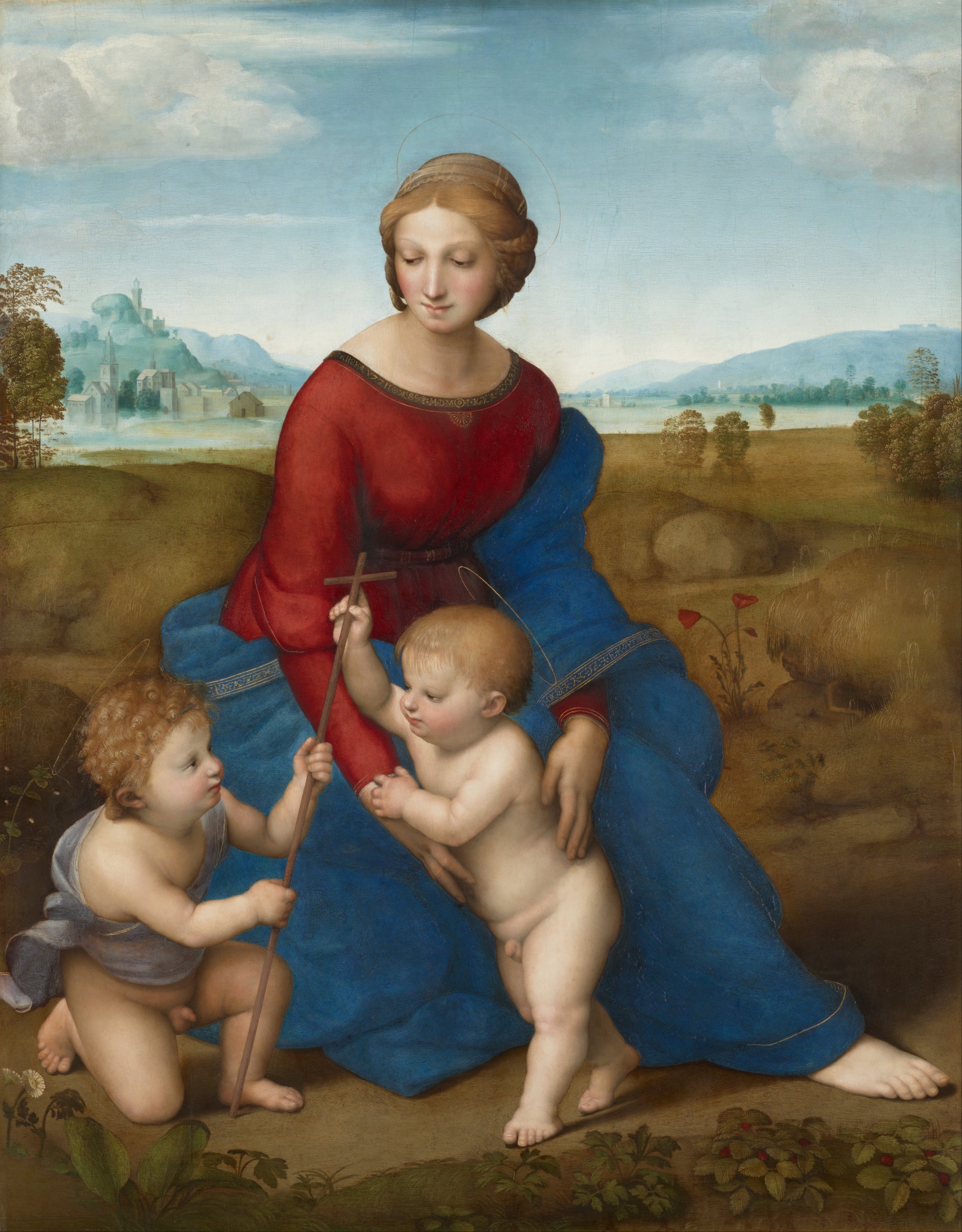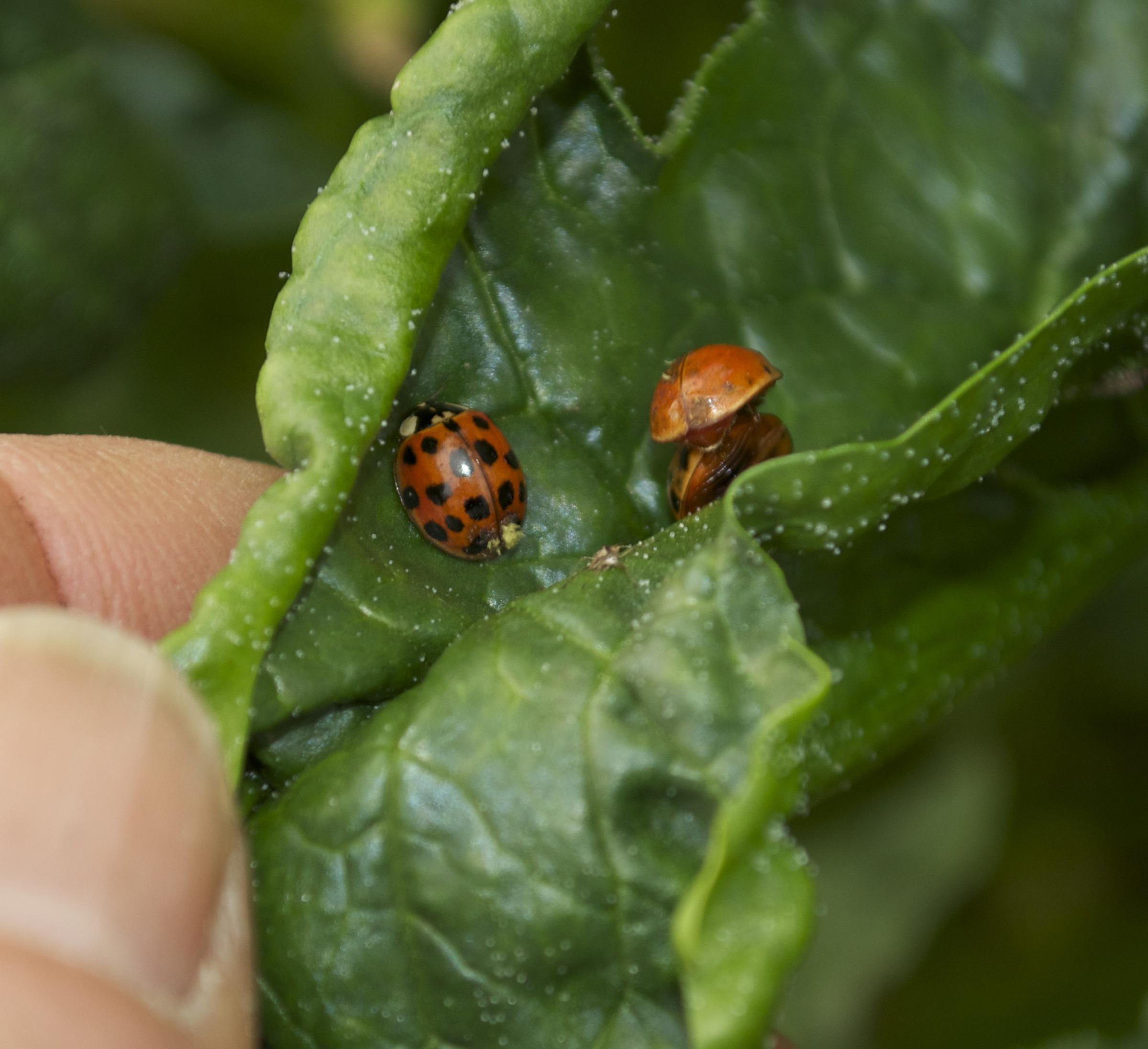Snowflakes? No.
Gardening never ceases to be interesting, even if the current object of interest is a pest. Not just any pest, but a NEW pest! And not just for me.
I was alerted to this pest when pulling a few weeds near my Brussels sprouts plants. Brushing against their leaves brought a cloud of what looked like fine snowflakes. They were, in fact, whiteflies, tiny (1.5 mm) fluttering insects, immediately recognizable to me from their common occurrence on houseplants.
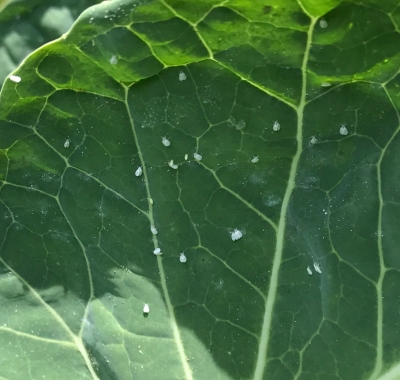
Cabbage whitefly
Whiteflies rarely show up on outdoor plants; in my experience, never. Easy enough to discover on the web, my whiteflies are appropriately named cabbage whiteflies (Aleyrodes protella). This native of Europe first turned up in the U.S. in 1993, but is rare in the Hudson Valley. It’s fond of all cabbages relatives, with a preference for kale. Not in my garden, though; kale, sharing the bed with the Brussels sprouts, is hardly attacked.
The attack seems mild, most evident, besides the snow clouds, as some black, sooty mold on the plants. Sooty mold is a fungus that feeds on the sweet exudate the insect drips on the plant. It’s only on the surface of the leaf so is harmless unless it becomes so dense that the leaf is shaded.
Cabbage whitefly isn’t easily controlled with chemical pesticides. I’m not worried, though, because the level of damage doesn’t warrant my lifting a finger against them.
If some control is needed before the season ends, sprays of either insecticidal soap or horticultural oils are effective — and won’t disrupt the whiteflies’ natural insect and fungal enemies, of which there are plenty. Cleaning up the bed at the end of the season also helps, for next year. Yellow-colored cards coated with something sticky, like Tangletrap, also could offer some control. For now, though, I’m just watching them flit about each time I draw near.
Peach Harvest
The peach crop got harvested a few days ago, all two of them. The tree is small, but not that small; it could have supported a couple of gallons of peaches.
This was a good season for peaches. Unfortunately, my farmden is not a good site for fruit. Insect pests can move in from the woods only 50 feet from the trees, and the low lying ground acts like a basin into which cold air can collect. That cold air brings late frosts (not this year), and moister air in which fungal diseases fester. Those are my excuses for my two-peach harvest.
On the other hand, my investment in the tree has been minimal. The tree grew from a peach pit. Sow an apple seed and the tree might take 10 years before it yields its first fruit. And then, after that long wait, the chance of that fruit tasting good is only about one in 10,000.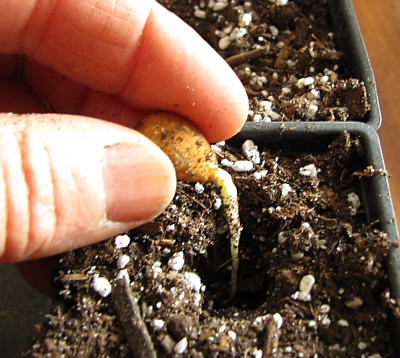
Sow a peach seed, and the tree might bear in 4 years. The fruit on that tree is likely to taste quite good, perhaps great. Peaches are self-pollinating, so there’s no foreign genes introduced into the resulting pit. Not so for apples, which don’t bear fruit unless pollinated by a different variety.
My peaches, by the way, tasted great. And, with gracefully drooping leaves that retain their shiny green color all season long, the tree is very attractive. I am hoping for a larger crop next year.
Ladybugs to the Rescue
Aha. Checked back with the whiteflies on the Brussels sprouts, and what do I see? Some ladybugs dining, moving up and down the leaves. The young larvae are likewise at work along with their parents.
(The “lady” in ladybug is, by the way, the virgin Mary. The German word for them, Marienkafer, translates also as Marybeetle.)
Among the many species of ladybug, all in the family Coccinellidae, are some that specialize in devouring mites, others specialize in mildews, still others on mealybugs (I mentioned last week purchasing and using them for fig mealybugs), some for scale insects, and so on. Some members of the family feed on plants: squash beetles and Mexican bean beetles, for instance.
I don’t know which species of ladybug is at work on my Brussels sprouts, but I’m happy to have them.
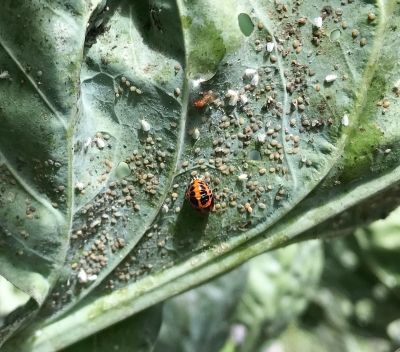
Cabbage whitefly & ladybug larvae
